I’m currently on page 676 of Paul Auster’s latest novel, the 866-page opus 4 3 2 1. And I have to say – each page is bliss. I find myself smiling a lot, occasionally chuckling gleefully, and even a couple of times on the edge of tears. I come back to the book each night like an old friend I am delighted to see again. Which makes sense – because Paul Auster is my favourite modern novelist by a country mile, and one I always return to with anticipation.
I was first introduced to him by my mum. One day at the library, she handed me a copy of Moon Palace, and said, “I think you might like this.” (She never does that with books. With shirts yes, but this was unusual.) I still don’t know quite why she thought I would like it, but I tried it. And fell immediately in love, with Auster’s mysterious, affectionate, spell-binding tale of Marco Stanley Fogg’s journey through the American twentieth century. That was the last Auster book I read from the library. After that, it was straight to the bookshop to read more. I gobbled them up – starting with his acknowledged classic trio of short dream-like detective novellas, The New York Trilogy. I burned through his novels – it would be impossible to pick favourites, but some I just loved: The Book of Illusions, his tale of a grieving professor who finds meaning in rediscovering a lost silent comedian; Timbuktu, his delightful novel narrated by Mr. Bones, a dog; The Music of Chance, his twisting, tragic tale of the dangers of gambling with your life (which was made into a splendid little movie with Mandy Patinkin and James Spader); and Mr. Vertigo, his wonderful story of a young orphan who learns to fly … and the dark dangers of the world of entertainment.
When I’d read all his novels heretofore published, and was awaiting his new one, I found myself trying his prose … and finding it equally human and absorbing. His tales of growing up in New Jersey, of near starvation poverty in Paris translating poems and attempting to be a writer, and his lessons in life becoming a father, trying out being a film-maker, aging and learning, in books like Hand to Mouth, The Red Notebook, and more recently Winter Journal. His published letters, with fellow writer, J. M. Coetzee, comparing life in South Africa and Brooklyn are a joy; the collection of stories of coincidence collected by the public radio station NPR from its listeners that he edits, True Tales of American Life, reads like a myriad of one-page Auster adventures; and even his screenplays, a form normally sluggish and cold to read, burst with imagination and playfulness.
Did the fact that with my middle name being Andrew, he and I were both Paul A., impact my interest in him? No doubt it did, and it’s the kind of play on words and names that he loves. I initially mis-pronounced his surname as “austere”, which I think he’d quite like. Since he’s both that and not that. His writing is clean and clear, uncluttered, never trying to bewilder us with clever language (unlike Joyce, one of his heroes). But his writing is also warm, funny, silly, intrigued, flawed, meandering and humane – never cold. Some people have told me he is a postmodern novelist, but I find myself arguing with them, because he’s not cynical and clinical – yes, he’s playful, in ways I’ll talk about below, but it’s never about form, it’s never cruel, desolate, giving up on us. It’s always sincere and compassionate – often whimsical. It’s full of love of life – I’ve personally always found Auster’s writing to be much more like Dickens than like Beckett.
I’ve been in the same room as him three times, all in New York, and I can say, in person he comes across as brave, curious, generous and humble, yet with a robust self belief. Though I’ve never spoken to him. The first time, he was reading from his new novel, Invisible, at the 92nd Street Y. He started to read, and I was surprised. Based on his author photo (Auster the author, mysterious dark eyes in a black polo neck) and his sensitive writing, I expected a gentle, light, bohemian voice. Instead, Auster had the pleasing smoky deep tones of a New Jersey truck driver. Then I went from surprised to astonished – he chose to read, in front of hundreds of people, a passage from the book that was essentially a long graphic sex scene, indeed an incestuous one, and I remember thinking, even as an actor who thought he was decently courageous, I would have struggled to do it. But it wasn’t to shock – he read with great brave calm, and it facilitated a powerful discussion afterwards about a key idea in the book – how much of this was fantasy, and how much we mangle memory in our lives. I was wowed – this man’s skill was only matched by his bravery.
The second time, I saw him speak at the Strand Bookstore, along with Edward Albee, about the influence of Samuel Beckett on their work. Kind of a dream come true for this actor! It was joyous to see how much he loved plays, even though he doesn’t write them – at times, he seemed to like them more than Albee! But what I was struck by was his humility – and his feeling of debt and awe to other writers, from Shakespeare onwards.
Finally, I went to see an on-stage adaptation of City of Glass, one of The New York Trilogy, at a tiny theatre in Greenwich Village. It was quite good – a little avant-garde artsy for my taste, but it captured theatrically a lot of the mystery about identity in the book. Then suddenly my evening became like a chapter … in a Paul Auster book. I heard a man laugh heartily, in a lovely warm guffaw, at many of the comic moments in the play. It sounded vaguely familiar … could it be … nah. Then, as I was leaving the theatre after the show, there walking in the lobby right in front of me … is Paul Auster. And I think, “Gosh, I should go up and talk to him. He’d love the coincidence of this, he just happens to be here the night I come, his huge fan, Paul A., Paul an Actor with Paul the Author …” when I noticed the writer-director of the play joining him, and starting to talk about the show, and Auster was warmly, generously congratulating him on the piece, and I realized – this was his moment and I didn’t want to disturb it. Maybe I should have held on, found a way to say hello, but this felt like the right thing in that Paul Auster moment too, as I walked off into the New York night, marvelling at life’s incredible capacity for meaningful chance.
But back to the books. What do I find so special about his writing? Well, besides his ability to create intriguing narratives, to develop and reveal character, and to examine big themes in his stories, there are a few special things that are particularly Paul Auster that I love:
I love how he makes lists.
I love his enchantment with games, both the intricacies and joys of sports, particularly baseball, but also games he makes up that his characters play, like Screwdriver Darts. (I recently was cleaning out some old boxes of papers, and found I had written down the complete rules to Playing Card Baseball that Auster created in one of his books.)
I love his fascination with chance and coincidence. Life is always full of strange twists of fate in Auster’s world, the gods are at play, the world is small and ingenious and deeply mysterious. And bets are always dangerous in a Paul Auster novel.
I love how he’s intrigued by names, and the power of names. Of the name Paul. Of getting nicknames. Of how names are changed, like immigrant surnames anglicized at Ellis Island. Of anagrams. Of matching names. Of friends with similar sounding names. Of choosing pen names and aliases. Of initials. And of the titles of books and movies and stories.
I love his affection for the very poetry of words – not just in their arrangement but in individual words alone – what they sound like, where they come from, what they look like. He plays with words.
I love his adoration of books, and of stories, and of stories within stories. His regard for the masters like Cervantes, Kafka and Dickens, and his fascination with the very act of writing, including the choice of pencils and notebooks used, of what desk to sit at and where, and of typewriters as heavy hearty old friends and great gifts. His awe at the very process of publishing and how bookshops are magical sanctums of quiet possibility.
I love his delight in movies and movie-going, of old black-and-white Hollywood from spinning noir to Laurel and Hardy screwball slapstick, and of slow-moving French movies. And of the different qualities of cinemas and being in them, from the Thalia in Manhattan to the Cinematheque in Paris. And of the mischievous truancy of a matinee on your own.
I love how his women are smart, adventurous, fierce and challenging, often mysterious, but with a delicate heartbreak (and romance-stopping heart-brake) to them. How he never underestimates the capacity of older people to still have strivings, dreams unfulfilled and to make major mistakes. And how he brings together little gangs of aspiring kooks, wanderers and lost souls.
I love how he nails the essence of places, especially New York and Paris. Both cities’ capacity to be foreboding from the outside and sweetly delicious from the inside. The quality of walking straight blocks in Manhattan and winding cobbles in Paris. Reliable diners in Brooklyn and bustling restaurants in Saint Germain. The French capacity for disdain and generosity, of New Yorkers’ grinding determination and secret flights of fancy.
I love how fascinated he is by the structure of a day. I find myself jealous of his characters and the routines they build. And how he sees the value in repetition, and in repetitive work and of deep delving, whether writing a book or building a wall.
I love his bad jokes. His love of lame puns and punchlines. Of catchphrases. Of the joy in people’s dumb attempts at humour.
And I love how much he loves people. That is clear in every word, every line, every page, every punch of his typewriter keys, his huge heart for all kinds of people amid the incomprehensible totality of life, and the worthwhile effort of writing to understand … bits of it.
Most of all, he is so paulfyl. I mean playful. I think that’s a pretty great quality – in art and life.
Thanks, Paul. From Paul.
***

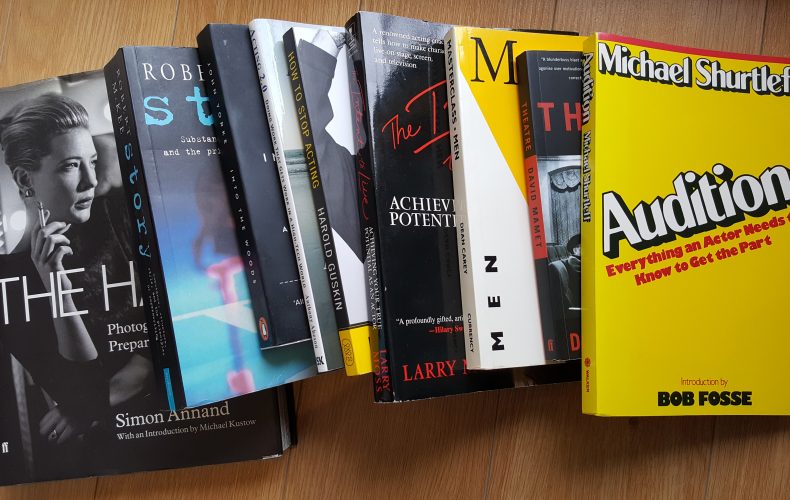
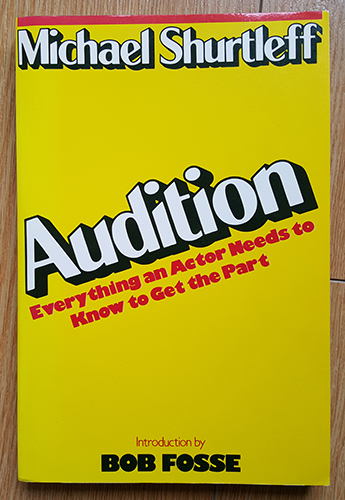 I don’t know if there’s a book that produces more creative juice for an actor when preparing for an audition (or frankly any performance of a script) than
I don’t know if there’s a book that produces more creative juice for an actor when preparing for an audition (or frankly any performance of a script) than 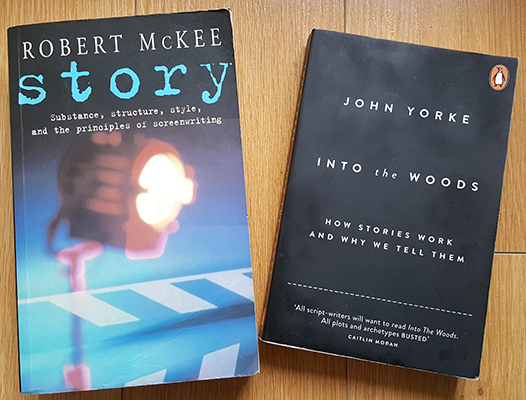 I am a deep believer that actors are storytellers – not puppets on a string, but artists who bring their insight and creativity to bringing a script to life. They owe a honourable duty of care to deliver the writer’s story to the audience as best as they can. To do so, they must understand not just their role in the piece, but the story as a whole. How it is structured, how it builds. As such, I think there are two texts that are truly genius at helping us to look at scripts and divulge their blueprint, find their foundation, see the gorgeous lines of their construction, and those are Story by American screenwriting teacher
I am a deep believer that actors are storytellers – not puppets on a string, but artists who bring their insight and creativity to bringing a script to life. They owe a honourable duty of care to deliver the writer’s story to the audience as best as they can. To do so, they must understand not just their role in the piece, but the story as a whole. How it is structured, how it builds. As such, I think there are two texts that are truly genius at helping us to look at scripts and divulge their blueprint, find their foundation, see the gorgeous lines of their construction, and those are Story by American screenwriting teacher 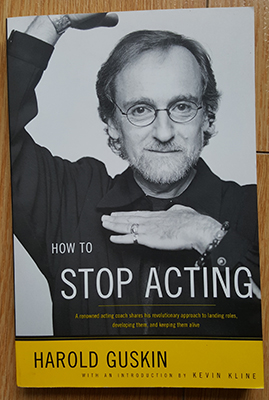 This is a book I have only come across recently, and found it really invigorating.
This is a book I have only come across recently, and found it really invigorating. 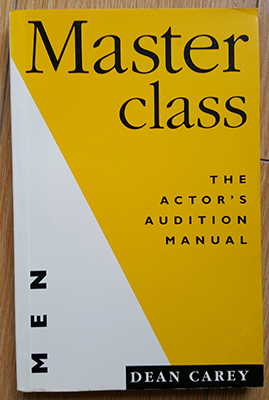 I love this book. I initially picked it up in late ’90s before going to drama school, because it had over 100 monologues in it, so I could find a great one to audition with. Indeed it does. But the gold in this book is the range of hugely practical exercises that its author, the Australian acting teacher
I love this book. I initially picked it up in late ’90s before going to drama school, because it had over 100 monologues in it, so I could find a great one to audition with. Indeed it does. But the gold in this book is the range of hugely practical exercises that its author, the Australian acting teacher 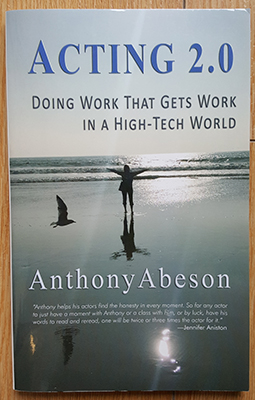 Now I am going to state up front my conflict of interest here: this is the book by my old acting teacher in New York,
Now I am going to state up front my conflict of interest here: this is the book by my old acting teacher in New York, 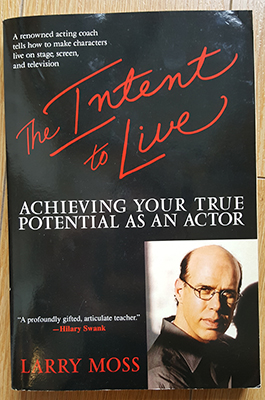 When you are ready to be challenged by a hard-ass teacher, there’s one man to go to –
When you are ready to be challenged by a hard-ass teacher, there’s one man to go to – 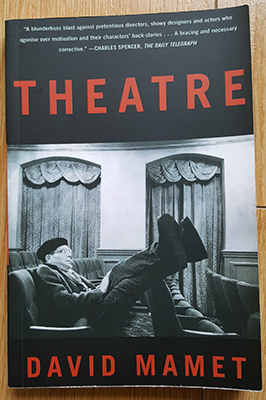 Now obviously Mamet is a master playwright and a very powerful thinker about the craft, and you wouldn’t go wrong reading any of his books.
Now obviously Mamet is a master playwright and a very powerful thinker about the craft, and you wouldn’t go wrong reading any of his books. 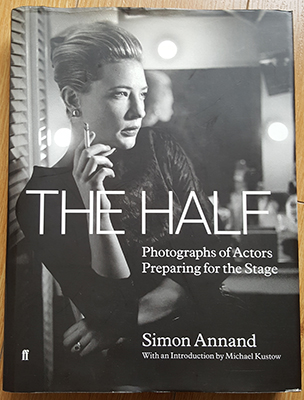 Maybe now you’re done reading – but there’s still one more book to see … and it is gorgeous and spine-tingingly inspiring to look at. It’s
Maybe now you’re done reading – but there’s still one more book to see … and it is gorgeous and spine-tingingly inspiring to look at. It’s 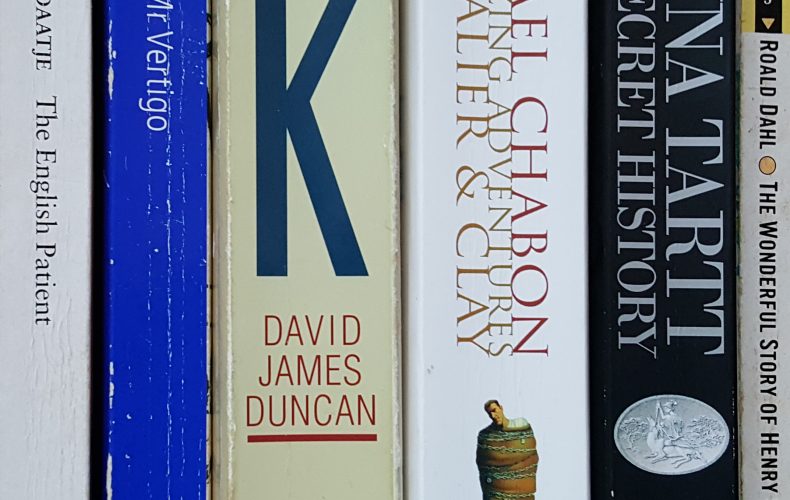
 The Secret History
The Secret History The Brothers K
The Brothers K The Wonderful Story of Henry Sugar
The Wonderful Story of Henry Sugar Glamorama
Glamorama The Amazing Adventures of Cavalier and Klay
The Amazing Adventures of Cavalier and Klay Great Expectations
Great Expectations The Princess Bride
The Princess Bride East of Eden
East of Eden Mr. Vertigo
Mr. Vertigo The English Patient
The English Patient 
 We head out the door and west on 23rd Street to 10th Avenue, we’re heading uptown now, so why not use
We head out the door and west on 23rd Street to 10th Avenue, we’re heading uptown now, so why not use  Okay, it’s 12.30pm and I’m hungry now. I could grab a tasty salmon tartine at Le Pain Quotidien on 40th Street, or a quick tuna baguette at a Pret a Manger, but you know what? I want something hot and tasty and cheap and … next door. So I step into the aptly named (cos it’s tiny) Piccolo Cafe, and order #1, a Fettuccine alla Bolognese (with no cheese, thank you very much) and grab a window counter stool to watch the world (and look at the vintage Italian newspapers on the wall). Pretty darn sharp, the pasta comes out, juicily steaming, and we tuck into its homey deliciousness. Yum.
Okay, it’s 12.30pm and I’m hungry now. I could grab a tasty salmon tartine at Le Pain Quotidien on 40th Street, or a quick tuna baguette at a Pret a Manger, but you know what? I want something hot and tasty and cheap and … next door. So I step into the aptly named (cos it’s tiny) Piccolo Cafe, and order #1, a Fettuccine alla Bolognese (with no cheese, thank you very much) and grab a window counter stool to watch the world (and look at the vintage Italian newspapers on the wall). Pretty darn sharp, the pasta comes out, juicily steaming, and we tuck into its homey deliciousness. Yum. Okay, I’m fighting fit for the afternoon … well, almost, let’s grab a cheeky dessert. Only one option here, you can leave your macarons and cronuts, let’s shally down to 38th Street and 6th Avenue, and join the queue (or to speak NYC, get in line) for the best chocolate cookies in the city. They are perfection: fresh-baked in-house, huge, crispy on the outsides, melty-warm on the inside, and frankly one of them is too rich for most men. If it’s a fine dry day, let’s grab them in their paper bag to-go, with your beverage of choice (flat-white, please), and head north two blocks to Bryant Park. Let’s sit by (or if it’s summertime on) the lawn, and enjoy my favourite park in the city, which somehow always manages to breeze midtown madness away and blow any of the city’s stresses off of me. Chill out gazing through the dappled branches of the trees, knowing that Batman definitely hangs out at night on top of that big gothic tower on the south side of the park. (Sure, Central Park is more awesome, but it’s also kind of a big deal, you have to explore into it. Bryant is quite happy to welcome you for a minute or ten. I think that would hurt Central Park’s feelings …)
Okay, I’m fighting fit for the afternoon … well, almost, let’s grab a cheeky dessert. Only one option here, you can leave your macarons and cronuts, let’s shally down to 38th Street and 6th Avenue, and join the queue (or to speak NYC, get in line) for the best chocolate cookies in the city. They are perfection: fresh-baked in-house, huge, crispy on the outsides, melty-warm on the inside, and frankly one of them is too rich for most men. If it’s a fine dry day, let’s grab them in their paper bag to-go, with your beverage of choice (flat-white, please), and head north two blocks to Bryant Park. Let’s sit by (or if it’s summertime on) the lawn, and enjoy my favourite park in the city, which somehow always manages to breeze midtown madness away and blow any of the city’s stresses off of me. Chill out gazing through the dappled branches of the trees, knowing that Batman definitely hangs out at night on top of that big gothic tower on the south side of the park. (Sure, Central Park is more awesome, but it’s also kind of a big deal, you have to explore into it. Bryant is quite happy to welcome you for a minute or ten. I think that would hurt Central Park’s feelings …) Well-fed by 2p.m., let’s take the afternoon for spot of cultural spirit-lifting. First step, nip around the corner of 40th Street to 5th Ave, to the New York Public Library. Say a quick hello to my two regal pals, the lion statues, trot up the steps (exercise done for today), up some more stairs inside (exercise done for tomorrow), and into the stunning beauty of the Rose Reading Room. Nearly 300 foot long, 50 feet high, it’s a great deep-breathing space, filled with a powerful quiet, a church of thought; it’s just the most marvellous place in the city if you need a great wooden table to sit and study at, knowing how many other minds have turned their cogs and scratched their pencils here in this mighty echoing space. Try not to squeak the chair as you leave …
Well-fed by 2p.m., let’s take the afternoon for spot of cultural spirit-lifting. First step, nip around the corner of 40th Street to 5th Ave, to the New York Public Library. Say a quick hello to my two regal pals, the lion statues, trot up the steps (exercise done for today), up some more stairs inside (exercise done for tomorrow), and into the stunning beauty of the Rose Reading Room. Nearly 300 foot long, 50 feet high, it’s a great deep-breathing space, filled with a powerful quiet, a church of thought; it’s just the most marvellous place in the city if you need a great wooden table to sit and study at, knowing how many other minds have turned their cogs and scratched their pencils here in this mighty echoing space. Try not to squeak the chair as you leave … … and from one august institution to another: we cut east to Madison Avenue and down to 36th Street, where we enter my favourite museum in the city, the Morgan Library. Of course the Guggenheim and MOMA are amazing for modern art, you can get lost in the Met, and I also have a soft spot for
… and from one august institution to another: we cut east to Madison Avenue and down to 36th Street, where we enter my favourite museum in the city, the Morgan Library. Of course the Guggenheim and MOMA are amazing for modern art, you can get lost in the Met, and I also have a soft spot for  Okay, it’s 5p.m., evening is calling, so it’s time to start heading back downtown. Let’s keep nipping down the relatively quiet Madison Avenue, until we hit the north-east corner of Madison Square Park. Mmmm, yes, I’m hungry too. Let’s walk south along the winding paths to the silver-grey shack with the sand and fairy lights, and get in line (this is New York, people) for a Shake Shack burger. Yes, there are other outlets in the city, and even in the airport now, so maybe it’s not so extraordinary. But (old man voice) “I remember when this was the only Shake Shack in the city, and it was only open in the summer. Arr.” And there still is something special about people’s excitement in the queue (sorry, in line) and then the buzz (the actual electric buzz of the alerting device) of seeing your burger is ready, and eating it out in the grassy open as the sun starts setting over the skyscrapers. (Two tricks: I never eat the last bite of a Shake Shack burger, for some reason it’s always disappointingly slimy-greasy. Put it down with a bow of respect to the other bites of salty-niceness. And don’t feed the squirrels. They’re NYC squirrels. They’ll just come and take your food. One jumped right into my lap once. Felt his claws through my jeans.)
Okay, it’s 5p.m., evening is calling, so it’s time to start heading back downtown. Let’s keep nipping down the relatively quiet Madison Avenue, until we hit the north-east corner of Madison Square Park. Mmmm, yes, I’m hungry too. Let’s walk south along the winding paths to the silver-grey shack with the sand and fairy lights, and get in line (this is New York, people) for a Shake Shack burger. Yes, there are other outlets in the city, and even in the airport now, so maybe it’s not so extraordinary. But (old man voice) “I remember when this was the only Shake Shack in the city, and it was only open in the summer. Arr.” And there still is something special about people’s excitement in the queue (sorry, in line) and then the buzz (the actual electric buzz of the alerting device) of seeing your burger is ready, and eating it out in the grassy open as the sun starts setting over the skyscrapers. (Two tricks: I never eat the last bite of a Shake Shack burger, for some reason it’s always disappointingly slimy-greasy. Put it down with a bow of respect to the other bites of salty-niceness. And don’t feed the squirrels. They’re NYC squirrels. They’ll just come and take your food. One jumped right into my lap once. Felt his claws through my jeans.) It’s 6p.m. And the city is starting to get hectic again as people get out of work and head to activities in the bright lights. We’re walking down Broadway, past the Flatiron building, down to and through Union Square, and down to 12th Street, where we are welcomed by the red banner of the Strand Bookstore. They say it’s 18 miles of books, and its packed shelves, the top rows too high to reach (without a staff-member clambering up a ladder), and its second-hand nature meaning you’ll often find a book here that’s been on your list for ages that’s (a) out-of-print and (b) on sale. I’m always enticed and amazed by the depth of their theatre and movie book section; their comicbook section used to be about the level of an average yard sale, but it has improved dramatically; and I think a book lover on any topic – history, art, sports and definitely novels – will be in bliss caressing the shelves and likely to leave with a heavy bag. And they have great events with authors in their rare book space: I once saw Paul Auster (my favourite novelist) discussing Beckett there with Edward Albee. (Now that is an “Only-in-New-York” experience.) Yes, there are many great bookshops in NYC (such as the impeccable
It’s 6p.m. And the city is starting to get hectic again as people get out of work and head to activities in the bright lights. We’re walking down Broadway, past the Flatiron building, down to and through Union Square, and down to 12th Street, where we are welcomed by the red banner of the Strand Bookstore. They say it’s 18 miles of books, and its packed shelves, the top rows too high to reach (without a staff-member clambering up a ladder), and its second-hand nature meaning you’ll often find a book here that’s been on your list for ages that’s (a) out-of-print and (b) on sale. I’m always enticed and amazed by the depth of their theatre and movie book section; their comicbook section used to be about the level of an average yard sale, but it has improved dramatically; and I think a book lover on any topic – history, art, sports and definitely novels – will be in bliss caressing the shelves and likely to leave with a heavy bag. And they have great events with authors in their rare book space: I once saw Paul Auster (my favourite novelist) discussing Beckett there with Edward Albee. (Now that is an “Only-in-New-York” experience.) Yes, there are many great bookshops in NYC (such as the impeccable  Okay gone 7p.m., it’s the evening in New York, so that means: you’re going to see a show. (Phew, thankfully you already bought your ticket!) For some people, that would mean leaping in a cab back up to Broadway, and that’s fun, but my pick is for us to keep walking west on 12th Street, then south on 5th Avenue, cut through the NYU students and general amusing weirdos in Washington Square Park to head west on 4th Street until we take a left on Barrow Street, and arrive at the theatre of the same name. It doesn’t look like much from the outside – wait, is this a school hall? But once we get inside this magic little venue, intimately seating 199, each time set up differently, you know you are going to see a cracking good play, as programmed by Scott Morfee and Tom Whirtshafter (and maybe if we’re lucky directed by David Cromer). I’ve seen an terrific run of shows there: Cromer’s Our Town, Tribes and The Effect; The Flick; Every Brilliant Thing, each one intriguing, theatrical and impactful.
Okay gone 7p.m., it’s the evening in New York, so that means: you’re going to see a show. (Phew, thankfully you already bought your ticket!) For some people, that would mean leaping in a cab back up to Broadway, and that’s fun, but my pick is for us to keep walking west on 12th Street, then south on 5th Avenue, cut through the NYU students and general amusing weirdos in Washington Square Park to head west on 4th Street until we take a left on Barrow Street, and arrive at the theatre of the same name. It doesn’t look like much from the outside – wait, is this a school hall? But once we get inside this magic little venue, intimately seating 199, each time set up differently, you know you are going to see a cracking good play, as programmed by Scott Morfee and Tom Whirtshafter (and maybe if we’re lucky directed by David Cromer). I’ve seen an terrific run of shows there: Cromer’s Our Town, Tribes and The Effect; The Flick; Every Brilliant Thing, each one intriguing, theatrical and impactful. It’s heading towards 11p.m., we’re pumped full of ideas – let’s grab a nightcap. We’re in the Village, the place is sprawling with bars – but let’s go to a personal favourite: a 3 minute walk up 7th Avenue and onto Christopher Street, then down the rickety stairs into Fat Cat. Sure, it’s kind of a dive, but where else can you grab a drink, play ping-pong AND listen to some pretty darn good live jazz at the same time? Scruffy greatness.
It’s heading towards 11p.m., we’re pumped full of ideas – let’s grab a nightcap. We’re in the Village, the place is sprawling with bars – but let’s go to a personal favourite: a 3 minute walk up 7th Avenue and onto Christopher Street, then down the rickety stairs into Fat Cat. Sure, it’s kind of a dive, but where else can you grab a drink, play ping-pong AND listen to some pretty darn good live jazz at the same time? Scruffy greatness.